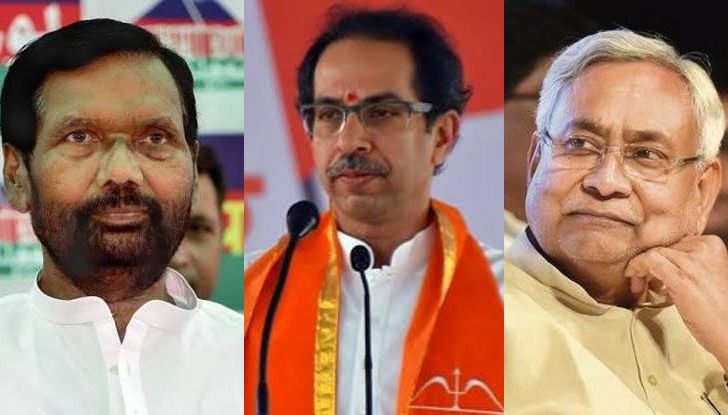While announcing that it was not joining
the Regional Comprehensive Economic Partnership (RCEP) “for now”, India has
rightly indicated that it was postponing the decision. It must join, sooner
than later, if it wants to play a leading role in its region, now billed as
“Indo-Pacific.”
It had rejected overtures to work with the
Association of Southeast Asian Nations (Asean) due to cold war compulsions and
took long to catch up. It cannot now afford such delays.
This month it declined to be part of the
15-nation trade bloc — of the 10 Asean members, China, Japan, South Korea,
Australia, and New Zealand, stating the deal disadvantages its services and
agrarian sectors.
Prime Minister Narendra Modi has always
juggled the domestic with regional and global to stay popular at home and seek
popularity abroad. In deciding to keep out of the RCEP, he has achieved the
first, but may lose out on the latter.
In explaining the eleventh-hour decision
in terms of Mahatma Gandhi’s ‘talisman’, he has not just “helped the poorest”
hit by a faltering economy, but also the rich and powerful farm, trade and
industries lobbies and the equally powerful conservatives within his political
fold.
These very forces that have selectively made
reforms difficult have also rallied against RCEP. There is no denying the
collective sigh of relief. Even for Modi, as of now, there are no political
dividends to be garnered by unsettling the economic community already harassed
by the economy’s slowdown. But he must deal with them medium term, if not short,
and not wait long-term.
It’s a play-safe. It’s not that the Modi
Government has shied away from taking risky, even controversial, decisions. Some
have not worked. This is being written, by the way, on the third anniversary of
the November 2016 demonetization. Its contribution to the present state of the
economy is significant. Unsurprisingly, Moody’s has scaled down the Indian
economy’s assessment from ‘stable’ to ‘negative’.
The public discourse in the run-up to the
Bangkok meet when RCEP was concluded changed by the day, even by the hour.
Confusion prevailed whether Modi would be doing right. In the forefront were his
ardent supporters who rooted for RCEP when he left for Bangkok and called names
to previous governments. They quickly changed sides when India stayed out.
Indeed, Commerce Minister Piyush Goyal was
the worst-hit, having stuck his neck out repeatedly as his job demands that. He
could have said RCEP is off, for the time being, and saved more blushes in
future.
Congress President Sonia Gandhi, Goyal’s
principal target, who opposed joining RCEP, may enjoy vindication of sorts. Protectionism
comes easy to all while dealing with India’s complex politico-economic
situation.
To be fair, her party’s Manmohan Singh
Government had in 2010 pushed through a key Free Trade Agreement (FTA) with the
Asean despite severe opposition from three Kerala ministers who feared severe
economic crises back home.
That FTA’s success, although partial,
helped the Modi Government to aggressively re-configure Narasimha Rao
Government’s “Look East Policy” into “Act East Policy”. What happens to the AEP
with RCEP rejected needs watching.
A difficult decision though, it exposes
India’s inability to affect domestic reforms that would make production
competitive. It also indicates shrinking of economic space for maneuvering and
of succumbing to domestic compulsions, both political and economic.
One can argue that the economic
environment isn’t conducive to RCEP. It may result in higher imports in the
short term. India suffers a cost disadvantage in energy, logistics and capital.
The Indian economy is really in the grip
of a slowdown, and the country’s entry into RCEP at such a time would have
caused significant pain. It may have meant more industrial distress. And it
could have caused more jobs to be lost at a time when enough are definitely not
being created. Manufacturing is in a mess, services sector is not growing fast
enough, and agriculture continues to be at the mercy of external elements and
internal inherent problems.
But then postponing the inevitable is not
the solution. Now that it has decided, India can use this breathing gap to
shape up things.
Coming to the brass tacks, China is the
real fear factor behind the decision. India is worried at the prospect of being
flooded by cheap Chinese imports, some routed through the other RCEP
signatories, others through neighbours Nepal and Myanmar.
India is also concerned about the lack of
adequate safeguards, some of them justifiable. For instance, the Asean-China
Free Trade Area agreement, signed in 2002, has benefitted China much more than
it has the Asean countries. India already has a huge $50-billion trade deficit
with China, which is two-thirds of its deficit with the RCEP grouping as a
whole.
The question is, should India just stall
and escape or brace up to take on China? It is out of the world’s largest
free-trade block. David has yielded space to Goliath.
By not signing the deal, India has missed
the opportunity to be part of global supply chains, and may miss some trade
opportunities in the region — a not-so-easy trade-off for a country that has
grown its economy the fastest when exports have done well.
Like it or not, rejecting RCEP gives India’s
“five trillion economy” and “Make in India” quests a setback, not just
psychologically, but also economically and politically. Investors from the new
grouping’s members may be wary and traders would need to deal with India
bilaterally.
It is a mis-step in international terms in one’s own region that is being vacated by Trump’s America. The Indo-US relations have been marked by closeness that is not always cozy. India has willy-nilly joined an isolationist U.S. in the last year’s Trump’s presidency. Will it change tack should a future American administration revert to a global approach?
The writer can be reached at mahendraved07@gmail.com






